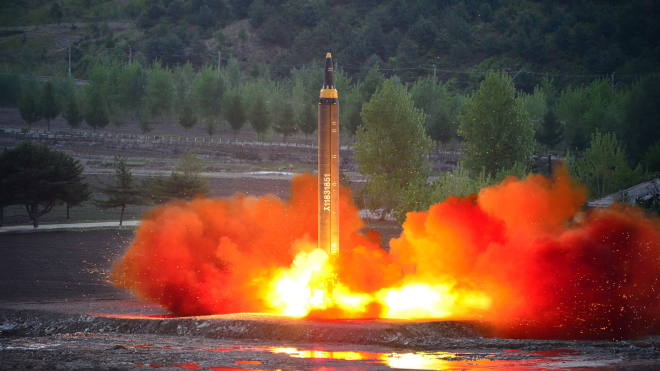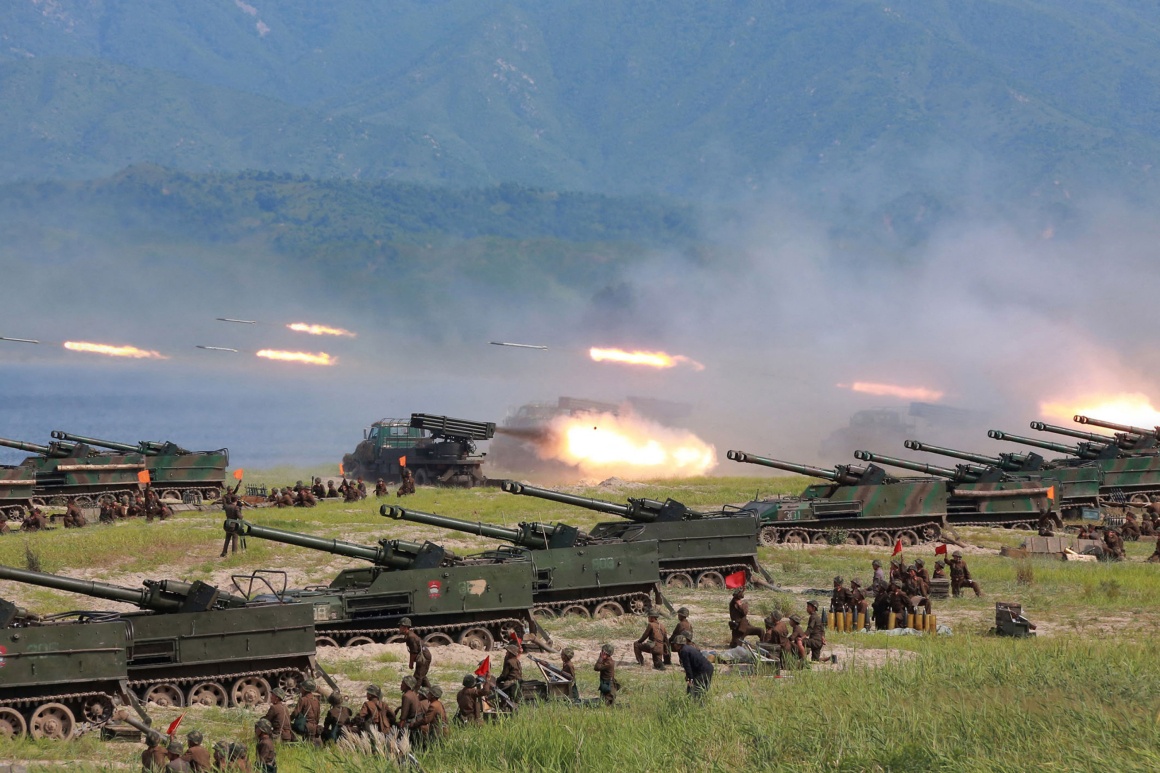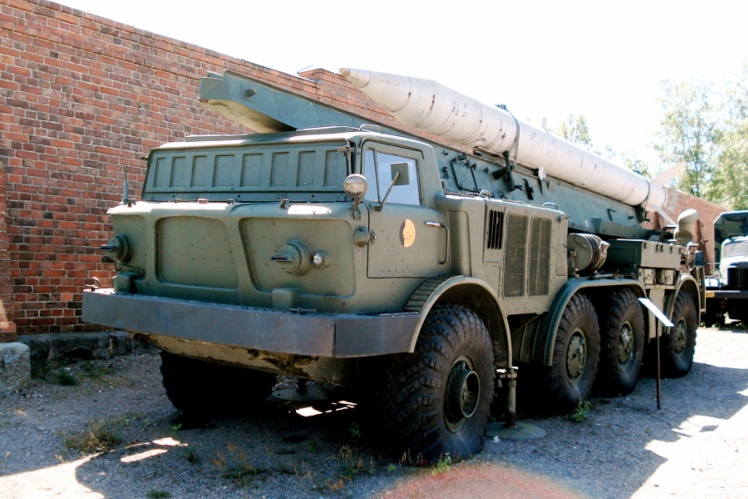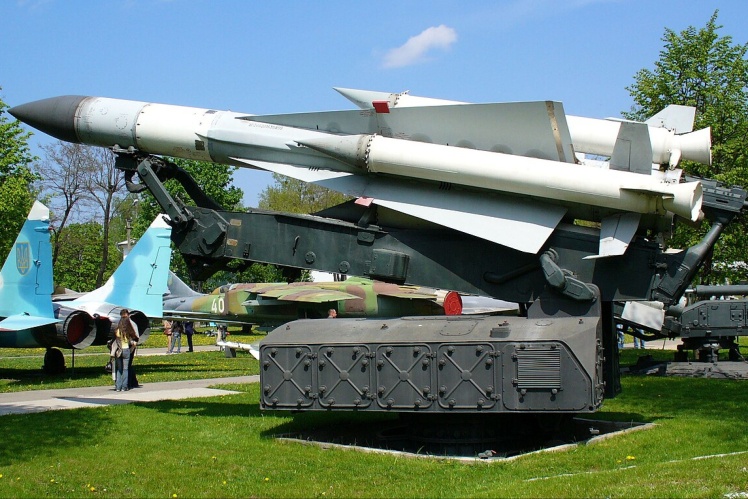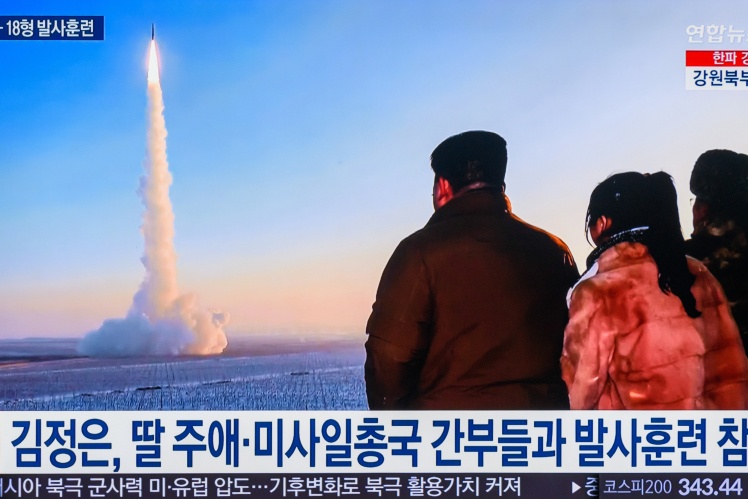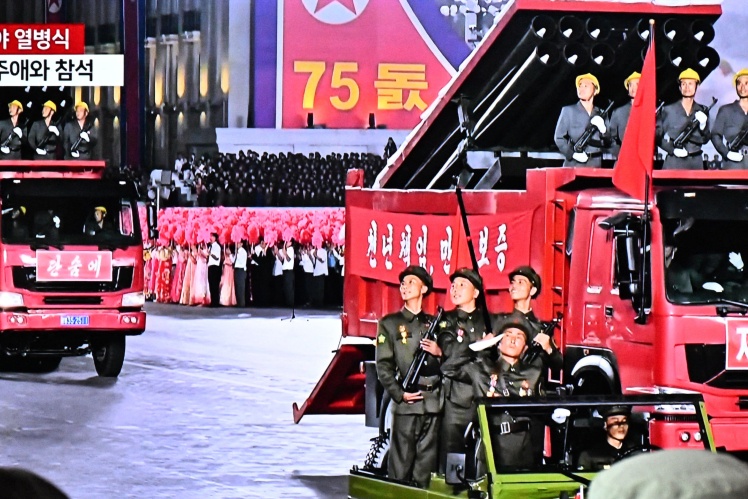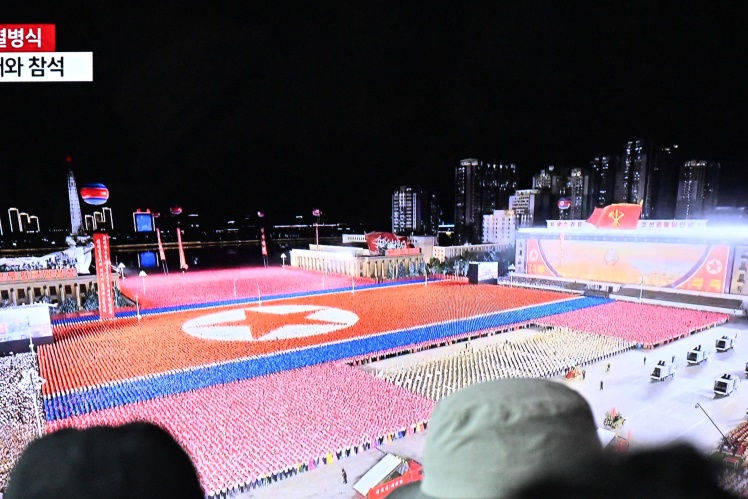Where does the DPRK have money for missile production?
Since the 1960s, North Koreaʼs economy has been divided into two sectors — military and civilian. The first one works, regardless of how the second one develops. The distribution of resources is carefully controlled by the government. Back in 1966, the DPRK spent a third of the total national budget on defense construction. The Committee for the Second Economy, created in 1970, still controls the countryʼs key — missile — program.
In February 2013, Kim Jong Un adopted the fundamental "Economy-Nuclear Equal Emphasis Policy" (ENEEP), according to which these two areas were to develop simultaneously. In practice, only the military sector remains a priority. In May 2016, Kim Jong Un presented a new five-year program — "National Strategy for Economic Development". According to it, the economy was supposed to grow by at least 8%. For this, it was necessary to reduce defense expenditures, but they remained at the same level, and in some places even increased. According to estimates by the US State Department, North Korea spends about $4 billion a year on its military sector, which is almost a quarter of the countryʼs GDP.
Soldiers of the North Korean army launch missiles during exercises. This photo was published by the official North Korean media in August 2017. It is not known the training place.
Getty Images / «Babel'»
"Kim Jong Un is actively pursuing the development of new models of military equipment, including long-range ballistic missiles, short-range missiles, missile launchers and submarine-launched ballistic missiles. Also, it continuously conducts test runs," says Wonhee Jung.
But the DPRK has been under sanctions for many years. Why are they not working?
Sanctions actually work. They were imposed by the UN Security Council in 2005, after North Korea began developing nuclear weapons. They were imposed separately by several other countries — the United States, South Korea, Japan, Australia, and the European Union. The sanctions prohibit the country from trading arms, exporting and importing gas, oil, seafood and other goods.
But there is one "but": the countryʼs main trading partner is China, which does not support sanctions. As Wonhee Jung says, in 2022, North Koreaʼs total foreign trade will be $1.59 billion, of which the country will receive 97% from China. The DPRK exports to China metallurgical products, electricity, silk and potato flour, and imports medicines, rubber, fertilizers, polymers, tobacco and soybean oil.
Kim Jong Un and Xi Jinping in Pyongyang, 2018.
Getty Images / «Babel'»
As a result, the sanctions hurt the North Korean economy, but not in the way the West expects. Because of the sanctions, people in the DPRK live in poverty, are often malnourished, and they have no influence on the nuclear program. All experts agree with this, but it is impossible to change the situation in the West.
Sanctions also work imperfectly. According to the UN quota, the DPRK can import no more than 500 000 barrels of oil per year. But in 2021, the country received 64 301 barrels more — these were supplies from Russia and China. Despite the ban, North Korea sells weapons to Eritrea, Libya, Ethiopia, Syria and Iran. North Korea has managed to circumvent bans on the export of coal, iron and seafood, and not only to China.
Another problem is that sanctions are weakening. The main reason is the growing influence of Russia and China in the UN. In 2022, they first vetoed a US proposal to expand sanctions. On the other hand, the West is in no hurry to strengthen sanctions, fearing the opposite effect. Kim Jong Un has already conducted more missile and nuclear tests than his father and grandfather combined. Additional sanctions may push it to more actively develop its nuclear program.
Is it possible to realistically assess the strength of the DPRK military-industrial potential?
It is difficult. Information about the military sector of North Korea is kept strictly secret by the authorities. Data on the technical characteristics of Korean missiles can only be obtained through the North Korean media, which is controlled by the government. You can indirectly assess the military industry if you look at the number of military factories, as says Wonhee Jung. In 1990, there were about 134 of them, now there are about a few hundred, employing up to two million people. These factories produce ammunition, armored vehicles, naval vessels, aircraft, missiles, and electronics.
According to a report by the British International Institute for Strategic Studies, in 2021, the North Korean army had about 550 combat aircraft, 290 helicopters, 400 warships, 280 landing craft, 70 submarines, 4 200 tanks, 2 500 armored vehicles and 5 550 missile launchers.
In addition, the North Korean military is improving chemical weapons. North Korea has greatly increased its capabilities in this area under Kim Jong Un, as Wonhee Jung states.
Previously, the chemical training of the military took place once every three years under the direction of the General Staff. Since last year, the partyʼs Central Military Committee has officially approved it as part of regular annual exercises.
"North Korean propaganda emphasizes that chemical weapons are a decisive factor in modern warfare," states Wonhee Jung.
What kind of missiles does North Korea make? How technological are they?
The Soviet Union helped North Korea in the production of missiles. In the late 1970s, North Korean engineers delved into the study of ballistic missiles, having disassembled the Soviet “Luna” missile, which was handed over to the USSR. In November 2022, North Korea launched a missile into the East Sea. An investigation by South Koreaʼs Ministry of National Defense revealed that it was an SA-5, a surface-to-air missile developed by the Soviet Union in the 1960s.
The Soviet FROG missile system in the Artillery Museum in Finland. S-200 launcher in the military-historical museum of the Air Force of the Armed Forces of Ukraine in Vinnytsia.
Japanʼs researcher of the North Korea JSF says that North Koreaʼs liquid-propellant missile engine is based on Russiaʼs RD-250. Until 2017, they were manufactured by the "Pivdenmash" plant. In 2012, two spies from the DPRK were detained in the Dnipro. They were interested in secret data related to the fuel systems of aircraft. They even recruited an employee of the "Pivdenmash", but the spies were caught red-handed and imprisoned for eight years.
"Some Western media are still convinced that the RD-250 technology was transferred to North Korea from Ukraine, but it is unlikely that Ukraine would do it voluntarily. Most likely, Russia was behind it," declares JSF.
An important milestone was July 13, 2023, when North Korea launched the Hwasong-18 intercontinental ballistic missile for the second time, as Wonhee Jung says. Firstly, the DPRK was able to develop a solid fuel engine. Such missiles can be refueled ahead of time, unlike liquid-fueled ones, which must be refueled before launch. It takes several hours, during which the missile can be detected by intelligence and destroyed. Secondly, the declared characteristics of the DPRK were also impressive, as told Wonhee Jung. In 74 minutes, the missile covered more than a thousand kilometers.
A television at a train station in South Korea shows the Hwasong-18 solid-fuel intercontinental ballistic missile launched by North Korea. The same TV shows Kim Jong Un and his daughter, who is probably named Kim Ju Ae. They are looking at the launch of the Hwasong-18.
Getty Images / «Babel'»
"The evolution of North Koreaʼs military technology is beyond imagination. The way intercontinental ballistic missiles and nuclear weapons have been improved there is amazing," emphasises JSF.
What do we know about the missiles that North Korea transferred to Russia? Did they really already hit Ukraine?
Likely yes. The information about this has already been confirmed by the Office of the General Prosecutor of Ukraine. JSF is also sure of this. He has seen parts of a ballistic missile that was found in Kharkiv after the attack on January 2, 2023, and it is similar to the North Korean KN-23. This is indicated by the details of the jet blade drive, the structure of the bottom and nozzle of the missile engine body, as well as its upper plate.
"I compared it with the Iskander M missile motor housing, which was found in Zaporizhzhia on October 5, 2022, and it is a completely different design," says the researcher.
KN-23 — or Hwasong-11Ga — is the prototype of the Russian Iskander-M. North Korea first tested this missile in May 2019. US intelligence reported that the KN-23 can hit a maximum of 600 km. KN-23 ammunition is up to 500 kg. Most likely, the accuracy of these missiles is slightly less than that of the Russian Iskander. A senior missile defense researcher at the International Institute for Strategic Studies Michael Elleman wrote in 2019: to accurately destroy a target with a radius of one hundred meters, it is necessary to launch at least 13 KN-23 missiles. In Iskander this indicator is twice as good.
This map shows the range of North Koreaʼs missiles.
Another ballistic missile, which was also tested in May 2019, is the KN-24. It appears to be modeled after the US Armyʼs ATACMS ballistic missile and has a range of up to 400 km.
The development of these missiles was a significant breakthrough for the DPRK. Previously, North Korea had only a few types of short-range missiles. These are the Hwasong-5 and Hwasong-6 complexes. These are modernized versions of the Soviet R-17 liquid-fuel ballistic missile. Their main problem is that they are very nonprecision. To hit a target with a radius of one hundred meters, it was necessary to use about a thousand missiles. Since 2015, North Korea has tried to improve this and equipped them with maneuverable warheads. But the tests ended in failure.
There are no confirmed figures on how many such missiles are in service in North Korea. It is only known that the production of these missiles is expensive and difficult — according to estimates by the Korean Institute for Defense Analysis, one missile costs $5 million.
What else has North Korea transferred (or can transfer) to Russia?
It is not known exactly which missiles North Korea transferred to the Russian Federation and in what quantity. Wonhee Jung says that North Korea may transfer fighter jets, surface-to-air missiles, armored vehicles, equipment and materials for the production of ballistic missiles to Russia. According to JSF, North Korea also has a large stockpile of ammunition that it can supply to Russia.
Another option that is being discussed is that the DPRK can help mercenaries who would fight for the Russian army on the territory of Ukraine. However, JSF is convinced that this is too risky a scenario for North Korea. Wonhee Jung agrees with him: "It is unlikely that the North will take such a step without Chinaʼs approval."
There have been no such signals yet.
Is the DPRK developing drones?
Yes. The DPRK launched its own UAVs on the territory of South Korea in 2014, 2016 and 2017. At the Party Congress of the Workersʼ Party of Korea in January 2021, a "Five-Year Defense Plan" was declared for the development of new weapons, which included "unmanned attack weapons and surveillance tools for intelligence."
On December 26, 2022, five North Korean drones crossed the Military Demarcation Line on the Western Front and entered South Korean airspace. One of them even came close to the no-fly zone designated to protect the president, as says Wonhee Jung.
"It is known that North Korea imported and modified American models that are used in the countries of the Middle East. It is believed that the calculated power of these drones is capable of carrying a 401-kilogram C4 bomb," claims the researcher.
On July 27, 2023, a new large North Korean unmanned aerial vehicle officially appeared in a parade commemorating the 70th anniversary of North Koreaʼs "victory" in the Korean War.
"To be precise, the images of the drone were shown to the public on the eve of the parade, when the Minister of Defense of the Russian Federation Sergei Shoigu was invited to the arms exhibition. On the day of the parade, drones flew over Pyongyang. Сoincidentally, they were very similar to the American drones RQ-4 Global Hawk and MQ-9 Reaper," tell JSF.
DPRK state television video of a Global Hawk drone (the first one) and a Reaper drone (the second one).
Відео архів / KCNA / «Бабель»
What can Russia give North Korea in return?
Russia has likely already provided North Korea with food, fuel and satellite launch technology, as JSF says. Since North Koreaʼs liquid-propellant missile engines are based on Russian technology, they are also vitally important to North Korea. JSF adds, that the DPRK also wants to purchase new fighter jets, probably Russian Su-35s.
In addition, North Korea hopes to obtain the nuclear technology, air defense systems and Western weapons that Russia is capturing on the battlefield in Ukraine, as says Wonhee Jung. She adds, it is likely that Russian equipment and technology contributed to North Koreaʼs successful launch of a third reconnaissance satellite in November 2023.
But the DPRK needs to balance in order to avoid new sanctions and not to undermine its own defense capability. The South Korean army is smaller than the North Korean army, but it is several times more technological, claims Wonhee Jung. The North needs new technology to match the South, and Russia can help with that. At the same time, North Korea is unlikely to launch new missiles, because their production is expensive and difficult, and the country needs a strategic reserve if inter-Korean relations deteriorate.
People at a train station in Seoul sit in front of a television showing a news broadcast with a photo of a parade to mark the 75th anniversary of the founding of North Korea on September 9, 2023.
Getty Images / «Babel'»
Babel believes that all dictators will eventually be defeated, and not even missiles will save them. Help independent media bring this time closer: 🔸 in hryvnia , 🔸 in cryptocurrency , 🔸 Patreon , 🔸 PayPal: [email protected].
Anton Semyzhenko and Oleksiy Yarmolenko participated in the preparation of the material.
